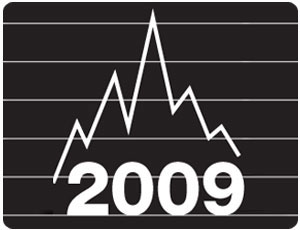The U.S. financial crisis spread rapidly to the rest of the world during the second half of the year, slowing the global economy and rolling back construction inflation in Europe, Asia, the Middle East and North America. In particular, the economic slowdown in China has taken away one of the main drivers of global construction inflation as China’s once voracious appetite for raw materials evaporates.

The average building costs in Western Europe fell from 4.9% last year to 3.5% in 2008, while building inflation in Eastern Europe fell from 9.4% in 2007 to 5.3%, according to London-based international project and cost management firm Gardiner & Theobald Inc. in its seventeenth annual survey of international costs conducted exclusively for ENR.
The slowdown in global construction inflation will continue into 2009, according to the G&T survey. The group of countries reporting forecasts for building inflation in 2009, on average, expected costs to increase 4.5% next year, compared to the 7.2% increase experienced by the same group this year.
Global Roundup
“Poland and all the (East) European countries are amazed by what’s going on,” says G&T’s Jan Holyst, in Warsaw. Poland itself, “is going through its first downturn since it became independent (from the Soviet Union),” he adds.
After two busy years, the residential market “completely evaporated,” while the commercial sector also has been hit, says Holyst. “There is a very substantial program for infrastructure but it’s very, very slow. Contractors have realized the market has done a complete U-turn. Prices are coming down, but very little is being tendered at the moment,” he says.
In Hungary, “we thought we were quite well insulated. Everybody was taken by surprise,” says Jim MacDaid G&T’s partner in Budapest. “All the developers not on site are postponing their developments. There’s going to be some serious competition between the big contractors.”
Romania’s construction market could “either fall of a cliff or remain steady,” says Gavin Moore, in G&T’s Bucharest office. After a period of sustained growth and inflation, costs started falling in the last quarter, he adds. Steel prices started dipping from August, while concrete remained “relatively static,” he reports.
Contractors in Romania are looking to bid for work in a way “unheard of in the last two years,” says Moore. No longer in a sellers’ market, “contractors are looking at their margins.”
In Western Europe, the U.K. market is one of the most affected by the crisis. “Overall construction workloads have declined at their fastest pace in 16 years with all sectors being affected,” notes Lance Taylor, chief executive of cost consultant Rider Levett Bucknall, Birmingham. “The credit crunch is affecting even large-scale public projects.” Contractors are “cutting margins...to secure whatever workload is available,” he adds. As a consequence, material costs which were previously increasing at rates in excess of general inflation are now dipping, notes Taylor.
The U.K. market could bottom out late next year or in early 2010, forecasts Gavin Murgatroyd, a G&T partner in London. Bid prices will fall but he warns owners that some contractors may claw back the money during construction.
Across the channel, in France, the impact has been less severe, believes Chris Gilmore of G&T’s Paris office. Nevertheless, “there’s clearly a fall off in new speculative work, specifically in the new commercial sector,” he adds.
The hotel sector, however, is proving “very resilient,” adds Gilmore. Infrastructure and state schools and health sectors also are “pretty positive,” he adds. “Contractors are now being much more competitive. I would say that tender prices have fallen.”
In Germany, “it was difficult to get competitive bids until two months ago,” says John Aitken, of cost consultant E.C. Harris, in Dusseldorf. “There were rising construction prices but that seems to have changed, with a lot of projects having been stopped.”
Swedish residential construction, accounting for about 40% of the total, “just stopped in September,” says Anders Kivijarvi, managing director of Bygganalys A.B., Stockholm. However, civil construction is holding up and may increase next year.
After a period when construction costs have grown several times faster than general inflation, “I’m not sure there will be a decrease,” he says. For bigger projects, the limited number of major contractors bidding will tend to keep prices up, Kivijarvi suggests. But competition will be more intense on smaller projects.


Post a comment to this article
Report Abusive Comment